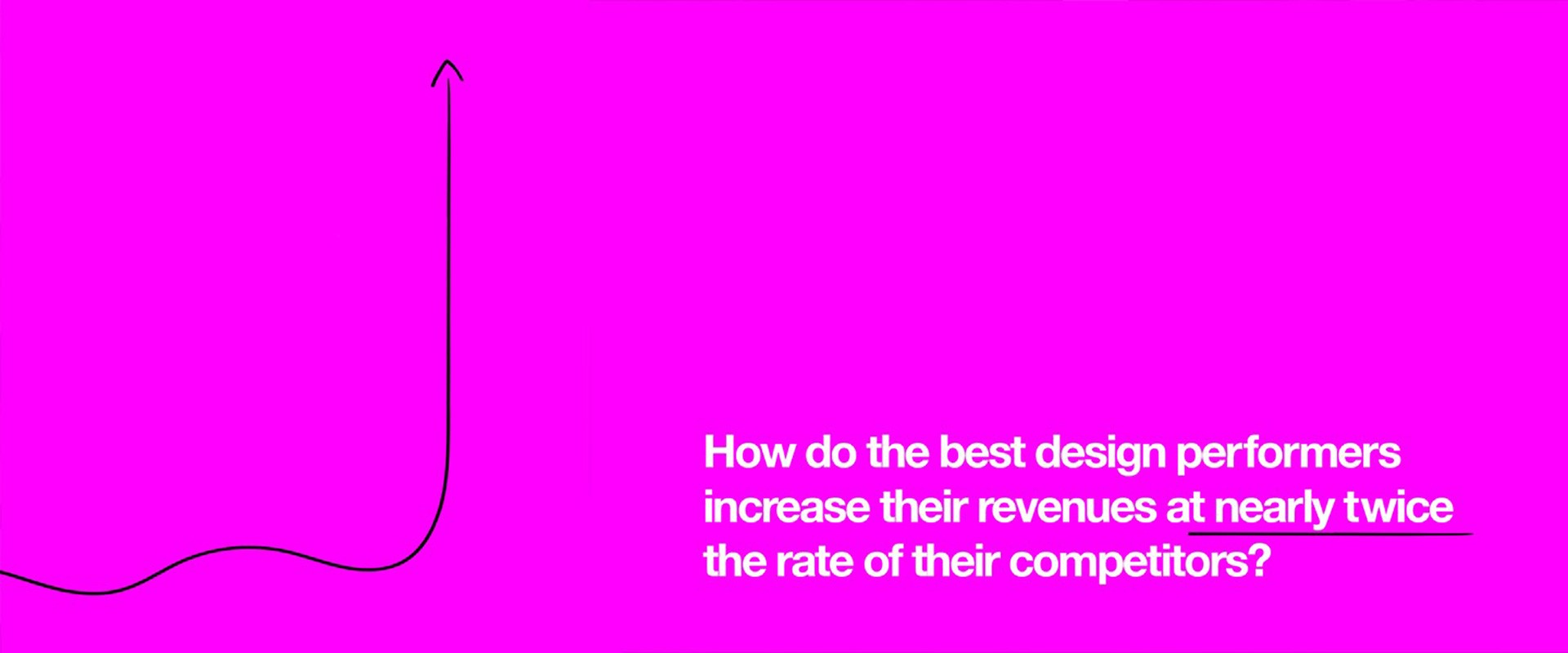A new report from leading global business consultants McKinsey has identified that businesses that invest in design grow at nearly twice the rate of their competitors.
It’s not always easy to quantify the commercial returns of design so Mickinsey have developed their own 'MDI' [Mckinsey Design Index] process which scores business performance across various criteria. Their in-depth research took over 5 years, collecting and analysing data from 300 large businesses based in various countries and across multiple industries. Mckinsey collected more than two million pieces of financial data and recorded more than 100,000 design actions through numerous surveys and interviews with senior leaders. Through analysing this research using their MDI tools, they found a strong correlation between high MDI scores and superior business performance. Mckinsey found that businesses with MDI scores in the top quarter outperformed industry benchmark growth by as much as two to one, they concluded that good design matters whether a business is focused on physical goods, digital products, services, or a combination of these.
However, despite the obvious commercial benefits of designing great products and services, the report found that consistently achieving this is notoriously difficult and is getting harder.
"Only the very best designs now stand out from the crowd, given the rapid rise in consumer expectations driven by the likes of Amazon; instant access to global information and reviews; and the blurring of lines between hardware, software, and services. Companies need stronger design capabilities than ever before."
The report highlighted the importance of user-centric design - placing the user at the core of thinking at all times - to achieve this. User-centricity demands a high-level view of where design can make a difference, it's not just about the look and feel or style of a product, as the legendary and oft quoted Steve Jobs once said:
“Design is not just what it looks like and feels like. Design is how it works.” Steve Jobs.
These days, for example, our smartphones warn us to leave early for a meeting because there's heavy traffic, and similar smart technology means that our houses know when we’ll be home and turn on the heat. The boundaries between products and services are merging into integrated experiences. Designing effectively for these new technologies, including web design, means mapping the user journey, identifying pain points and the potential opportunities to delight the user be that through a more efficient process or an interaction that brings a little 'wow' factor. We all experience these moments all the time, I had one last night when my TV told me the batteries are running low in the remote, not a big thing but a useful one. The days of starting a project by “copying and pasting” the technical specs from the last job are gone. A user-centric design approach starts with getting solid customer insights gathered from users by observing and, more importantly, understanding their needs before moving towards initial design concepts. The good news is that the opportunities for users to feed back their opinions are easier than ever to gather, in fact this happens naturally on social media all the time - whether companies want to listen or not.
The best design-led companies - and the classic reference here is Apple and it's no coincidence that it's become the world's most valuable company by putting design at its core - deliver exceptional designs, launch after launch. Design-centric companies realise that a product launch isn’t the end of iteration, nearly all
commercial software publishers for example issue constant updates to improve its products after launch. Apple have refined and improved the Apple Watch after a perhaps lukewarm initial reaction, to reflect how customers use them. This is one of many products they constantly look to improve through reiteration, the ipad also had mixed reviews on launch.
The Report summarises that:
"Design flourishes best in environments that encourage learning testing and iterating with users practices that boost the chances of creating breakthrough products and services while simultaneously reducing the risk of big, costly misses. That approach stands in contrast to the prevailing norms in many companies, which still emphasise discrete and irreversible design phases in product development. Compartmentalsation of this sort increases the risk of losing the voice of the consumer or of relying too heavily on one iteration of that voice."
The McKinsey Design Index highlights four key areas for businesses to focus on:
- Like all strategic decisions, it must be led from the top through adopting an analytical approach to design and by measuring performance.
- Put the user-experience at the core the company’s culture by 'softening internal boundaries between physical products, services, and digital interactions, that don’t exist for customers.'
- Encourage designers and design-led thinking, get them involved with other teams and skill sets to work together to improve the overall user experience.
- Finally, iterate, test, and learn rapidly, incorporate user insights from the first idea and keep doing this after launch.
Businesses that successfully address these four areas will boost their chances of becoming more creative organisations that consistently design and develop great products and services which, in turn, offers the potential of doubling growth.
The full report can be found here:

